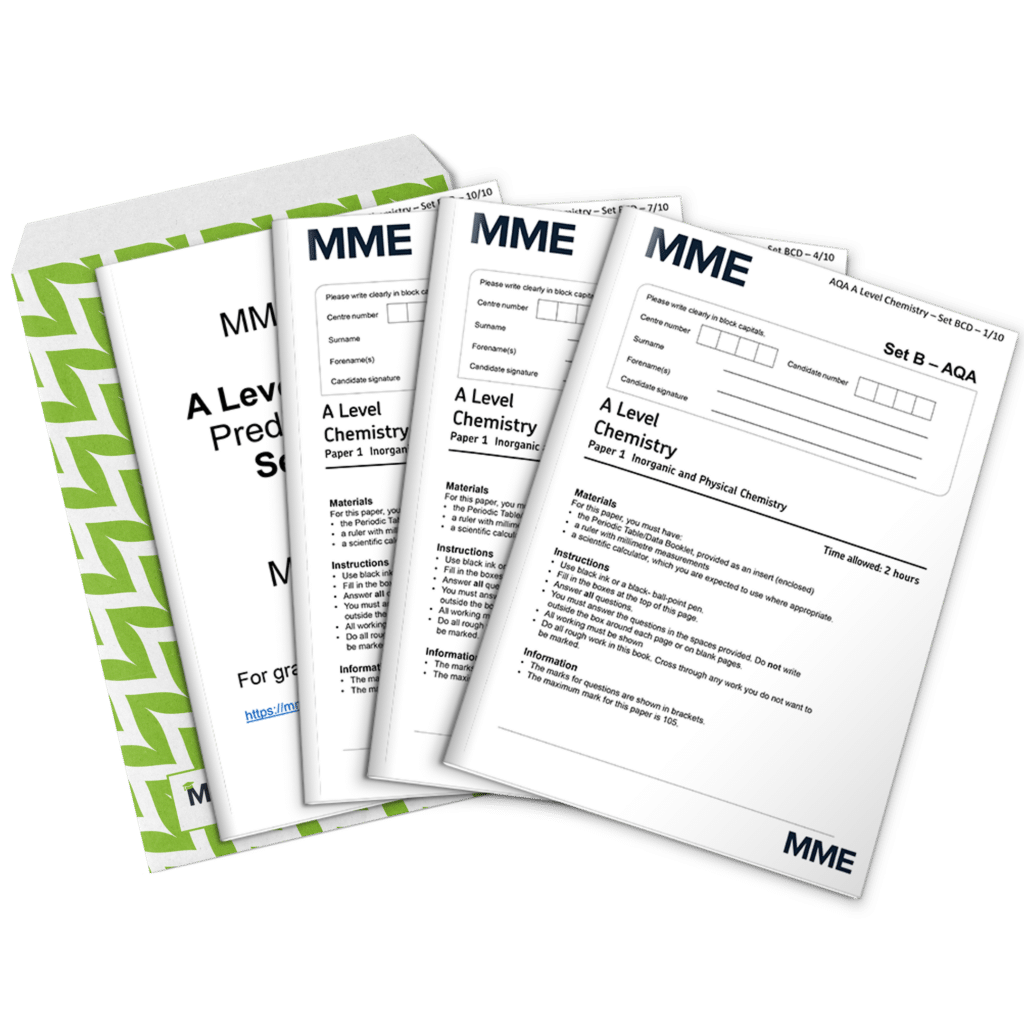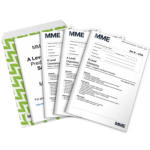Halide Salt Reactions and Disproportionation
Halide Salt Reactions and Disproportionation Revision
Halide Salt Reactions and Disproportionation
Halide salts can undergo very interesting reactions with sulfuric acid. The product of these reactions depends on the reducing power of the halide present.
Chlorine can also be involved in reactions known as disproportionation reactions where it is both oxidised and reduced.
The Reducing Power of Halides
We have already had a look at the oxidising power of halogens, so we are now going to look at the reducing power of halides and how it can influence reactions.
A reducing agent is a substance that reduces another substance while it itself is oxidised (loses electrons). The reducing power of a substance refers to its ability to reduce other substances. The reducing power of halides increases down group 7. This is because, down group 7, the ions get bigger so it is easier for outer electrons to be taken by other substances since the attraction between the nucleus and outer electrons is smaller.
We can carry out and observe reactions with halides and concentrated sulfuric acid to demonstrate the reducing power of halides.
Reactions of Fluoride and Chloride with Sulfuric Acid
When fluoride and chloride-containing halide salts react with concentrated sulfuric acid, an acid-base reaction occurs rather than a redox reaction. This happens because fluoride and chloride ions do not have a lot of reducing power, so cannot reduce sulfuric acid.
\text{NaF}_{\text{(s)}} + \text{H}_2\text{SO}_{4\text{(l)}} \rarr\text{NaHSO}_{4\text{(s)}} + \text{HF}_{\text{(g)}}
\text{NaCl}_{\text{(s)}} + \text{H}_2\text{SO}_{4\text{(l)}} \rarr\text{NaHSO}_{4\text{(s)}} + \text{HCl}_{\text{(g)}}
Observation
- White, misty fumes are produced by \text{HF} and \text{HCl} in each reaction.
Reactions of Bromide with Sulfuric Acid
Bromide ions are stronger reducing agents than chloride and fluoride ions. While bromide-containing halide salts also undergo an acid-base reaction, the strong reducing power of bromide ions also allows for a redox reaction to take place.
The following equations show the reactions that take place when sodium bromide (NaBr) initially reacts with concentrated sulfuric acid. In the first equation, an acid-base reaction takes place and in the second reaction, a redox reaction takes place.
\text{NaBr}_{\text{(s)}} + \text{H}_2\text{SO}_{4\text{(l)}} \rarr \text{NaHSO}_{4\text{(s)}} + \text{HBr}_{\text{(g)}}
2\text{HBr}_{\text{(aq)}} + \text{H}_2\text{SO}_{4\text{(l)}} \rarr \text{Br}_{2\text{(g)}} + \text{SO}_{2\text{(g)}} + 2\text{H}_2\text{O}_{\text{(l)}}
Observations
- In the acid-base reaction, white misty fumes of \text{HBr} are released.
- In the redox reaction, orange fumes from \text{Br}_2 and a colourless acidic gas, \text{SO}_2, are evolved.
Reactions of Iodine with Sulfuric Acid
Iodide ions have a stronger reducing power than fluoride, chloride and bromide ions, therefore, iodide ions can reduce sulfur much more readily than the other halide ions.
The following equations show the reactions that take place when sodium iodide \left(\text{NaI}\right) initially reacts with concentrated sulfuric acid. The many equations show the extent to which iodide ions can reduce \text{H}_2\text{SO}_4.
\text{NaI}_{\text{(s)}} + \text{H}_2\text{SO}_{4\text{(l)}} \rarr \text{NaHSO}_{4\text{(s)}} + \text{HI}_{\text{(g)}}
2\text{HI}_{\text{(g)}} + \text{H}_2\text{SO}_{4\text{(l)}} \rarr \text{I}_{2\text{(s)}} + \text{SO}_{2\text{(g)}} + 2\text{H}_2\text{O}_{\text{(l)}}
6\text{HI}_{\text{(g)}} + \text{H}_2\text{SO}_{4\text{(l)}} \rarr 3\text{I}_{2\text{(s)}} + \text{S}_{\text{(s)}} + 4\text{H}_2\text{O}_{\text{(l)}}
8\text{HI}_{\text{(g)}} + \text{H}_2\text{SO}_{4\text{(l)}} \rarr 4\text{I}_{2\text{(s)}} + \text{H}_2\text{S}_{\text{(g)}} + 4\text{H}_2\text{O}_{\text{(l)}}
Observations
- \text{HI} is released in the form of white misty fumes.
- When iodine is produced, purple fumes are released and a black solid is formed.
- When sulfur is produced, a yellow solid is formed.
- When \text{H}_2\text{S} is formed fumes with a strong eggy smell are evolved.
Chlorine
Chlorine is a halogen that is commonly used within different industries because of its properties.
The Reaction of Chlorine with Water
Chlorine reacts in two different ways with water depending on whether it is exposed to sunlight or not.
In the presence of bright sunlight, chlorine reacts with water to produce hydrochloric acid and oxygen. The equation for the reaction is as follows.
2\text{Cl}_{2\text{(g)}} + 2\text{H}_2\text{O}_{\text{(l)}} \rarr 4\text{HCl}_{\text{(aq)}} + \text{O}_{2\text{(g)}}
In the absence of sunlight, disproportionation takes place. This is because chlorine is both oxidised and reduced, resulting in chloride ions \left(\text{Cl}^-\right) and chlorate \left(\text{I}\right) ions \left(\text{ClO}^-\right) being formed. The equation for the reaction is as follows.
\text{Cl}_{2\text{(g)}} + \text{H}_2\text{O}_{\text{(l)}} \rightleftharpoons \text{HClO}_{\text{(aq)}} + \text{HCl}_{\text{(aq)}}
The reaction of Chlorine with Sodium Hydroxide
In a reaction between chlorine and cold sodium hydroxide, water, sodium chloride and sodium chlorate \left(\text{NaClO}\right) are formed.
\text{Cl}_{2\text{(aq)}} + 2\text{NaOH}_{\text{(aq)}} \rarr \text{NaCl}_{\text{(aq)}} + \text{NaClO}_{\text{(aq)}} + \text{}_{\text{(aq)}} + \text{H}_2\text{O}_{\text{(l)}}
Uses of Chlorine
Chlorine is commonly used as a water treatment because it is effective in killing bacteria. Although chlorine can have some toxic effects, it is only used in small amounts so the benefits far outweigh the drawbacks.
The reaction between chlorine and sodium hydroxide forms sodium chloride \left(\text{NaCl}\right) and sodium chlorate \left(\text{NaClO}\right) which can be used as bleach.
Required Practical
Identifying Ions
You will need to be able to carry out simple test-tube reactions to identify cations such as group 2 elements and ammonium ions \left(\text{NH}^{4+}\right) and anions such as halide ions, hydroxide ions, carbonate ions and sulfate ions.
Cations
Group 2: Group 2 metal cations can be identified by reacting them with an ammonium solution, dilute sodium hydroxide or dilute sulfuric acid.
Ammonium Solution
Only magnesium will form a white precipitate when it reacts in an ammonium solution.
Dilute \textbf{NaOH}
- Mix an equal amount of the test solution containing the group 2 metal cation and dilute sodium hydroxide.
- Then continue adding sodium hydroxide dropwise until it is in excess.
Group 2 metal cations usually form a colourless solution. In excess \text{NaOH}, some of them will form precipitates.
| Group 2 Metal Cation | ||||
| Magnesium | Calcium | Barium | Strontium | |
| Equal Volume of \text{NaOH} | Off White Precipitate | Off White Precipitate | Colourless Solution | Off White Precipitate |
| Excess Volume of \text{NaOH} | White Precipitate | Off White Precipitate | Colourless Solution | Off White Precipitate |
Dilute \textbf{H}_2\textbf{SO}_4
- In a test tube, mix an equal amount of the test solution containing the group 2 metal cation and dilute sulfuric acid.
- Then continue adding sulfuric acid by drops until it is in excess.
| Group 2 Metal Cation | ||||
| Magnesium | Calcium | Barium | Strontium | |
| Equal Volume of \text{H}_2\text{SO}_4 | White Precipitate | Off White Precipitate | Off White Precipitate | White Precipitate |
| Excess Volume of \text{H}_2\text{SO}_4 | White Precipitate | Off White Precipitate | Colourless Solution | White Precipitate |
Ammonium ions: Ammonium ions can be identified through a reaction with sodium hydroxide solution.
- In a test tube, mix an equal amount of the solution containing ammonium ions and sodium hydroxide solution.
- Warm the mixture gently. If ammonium ions are present, fumes of ammonia gas should evolve.
- Place damp red litmus paper at the mouth of the test tube. If the litmus paper changes colour to blue, the gas is ammonia and ammonium ions must be present.
Anions
Hydroxide Ions: Damp red litmus paper will turn blue when placed in an aqueous solution containing hydroxide ions.
Carbonate ions: Carbonate ions can be identified through a reaction with hydrochloric acid.
- In a test tube, mix an equal amount of the test solution containing carbonate ions and dilute hydrochloric acid.
- Bubble the gas produced through limewater. If the lime water goes cloudy, carbonate ions are present.
Sulfate ions: Sulfate ions can be identified through a reaction with barium chloride.
- In a test tube, mix an equal amount of the substance containing sulfate ions, dilute hydrochloric acid and barium chloride.
- If a white precipitate is formed, sulfate ions are present
Halide Ions (Aqueous): Halide ions in an aqueous solution can be identified through a reaction with silver nitrate. For different halides, different coloured precipitates are formed.
Halide Ions (Solid): Halide ions in solids can be identified through a reaction with concentrated sulfuric acid.
- Using a spatula, place a small amount of the solid containing halide ions into a test tube and then add a few drops of concentrated sulfuric acid.
- Record the observation.
- Fumes from the above reaction should always turn damp blue litmus paper red if halide ions are present
| Halide Ion | |||
| Chloride | Bromide | Iodide | |
| Concentrated \text{H}_2\text{SO}_4 | White Misty Fumes | Orange Fumes | Purple Fumes and Black Precipitate |
Halide Salt Reactions and Disproportionation Example Questions
Question 1: Solid potassium bromide undergoes a redox reaction with concentrated sulfuric acid.
a.) Give the oxidation product formed from potassium bromide.
b.) Give the reduction product formed from sulfuric acid.
[2 marks]
Question 2: When chlorine reacts with water in the absence of sunlight, a disproportionation reaction takes place and an equilibrium is established.
a.) Write an equation for the equilibrium.
b.) Explain why chlorine is used to kill bacteria in swimming pools, even though the chlorine is toxic.
[2 marks]
a.)
\text{Cl}_2+\text{H}_2\text{O}\rightleftharpoons\text{HOCl}+\text{HCl}
b.)
- Only used in small amounts.
- The health benefits outweigh the risks.
Question 3: Explain why chloride ions are weaker reducing agents than bromide ions.
[2 marks]
Chloride ions are smaller than bromide ions OR chloride ion electrons are closer to the nucleus OR chloride ions has fewer shells OR chloride ions has less shielding.
Outer shell electrons from chloride ions are more strongly held by the nucleus compared with bromide ions.









